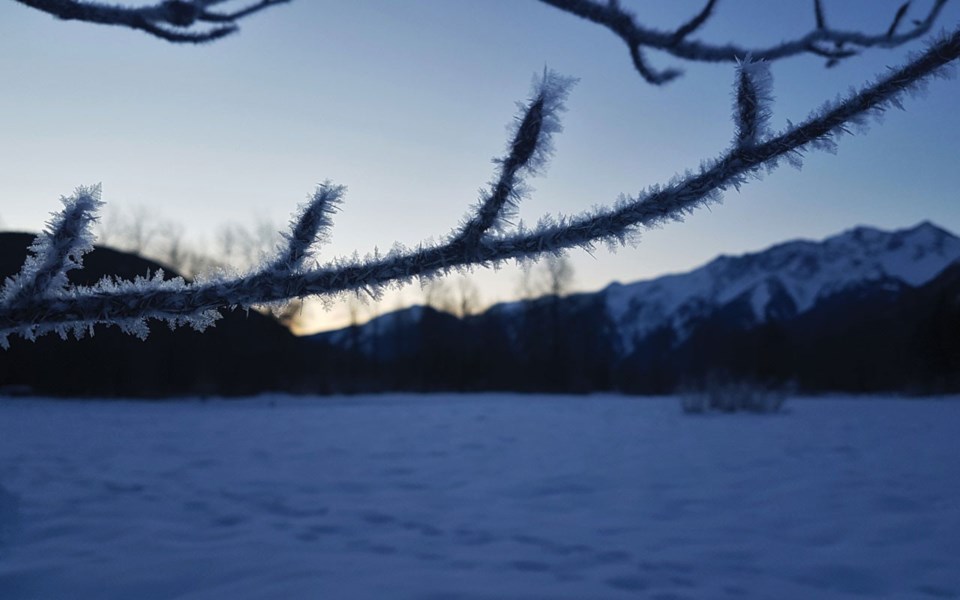There are a handful of small moments from my time in British Columbia that stick out despite their somewhat mundane nature. These moments aren't exciting in the traditional sense, but they've been pivotal in my growing appreciation for the natural world.
One of these arrived on a New Year's morning several years ago. I was out for a snowshoe with my adventure-loving pup, Guinness. The sun hadn't shown its face yet and my breath reflected the light from my headlamp back at me in the cool dawn. I could hear Guin move through the snow in front of me, his steps punctuated by a soft tinkling noise like dry snow falling on a tent. I crested the final rise to my destination—a favourite place of mine with a spectacular view of mountains, rivers, and waterfalls. I flopped down inelegantly in the snow and, scanning the area as I poured a cup of my favourite tea, was finally able to put a name to the odd sound I'd heard. All around me, reflecting the pale light were five-centimetre-high ice feathers—hoar frost!
Before this moment, I had only ever heard the phrase hoar frost. Living in Canada, you're likely familiar with hoar frost's baby cousin, frost. This scourge of morning windshields, the precursor to hoar frost, comes from the same essential condensation process that yields dew in warmer weather. On cold, clear nights, as humid air blows gently over below-freezing surfaces, the gas-phase water vapour in the air skips the liquid-phase water droplet and collects directly on surfaces as solid-phase ice crystals in a process called desublimation.
As time progresses, and more water vapour desublimates on the surface, the crystals start to grow in the direction from which the moisture derives, sometimes forming needle or feather-like structures. Because they need water-saturated air in order to form, these are more likely to be found close to moisture sources such as creeks. While a gentle wind can hasten the growth, a strong wind will knock them over. If temperatures are too warm, or if there's too much direct sunshine, they will melt.
Due to their fragility and tendency to form only in specific conditions, it can be difficult to predict where there will be a hoar-frost layer. It may have formed only at a certain elevation band, above or below a cloud layer, or may only be present sporadically in sheltered pockets where humid air pooled overnight.
Although beautiful, hoar frost can also form the basis for dangerous avalanche conditions. When heavy layers of new snow fall on top of a hoar layer, the crystals reduce bonding between the old and new layers of snow. This weak layer can persist for weeks or even months and can cause massive slab avalanches of particular concern to snowsport enthusiasts.
Looking to find some ice crystals yourself? Cold, clear mornings near moisture sources are your best bet.
Have some hoar frost pictures you would like to share? Join us on the Whistler Naturalists group on Facebook! Happy hunting.
Naturespeak is prepared by the Whistler Naturalists. Learn more: Whistlernaturalists.ca.




